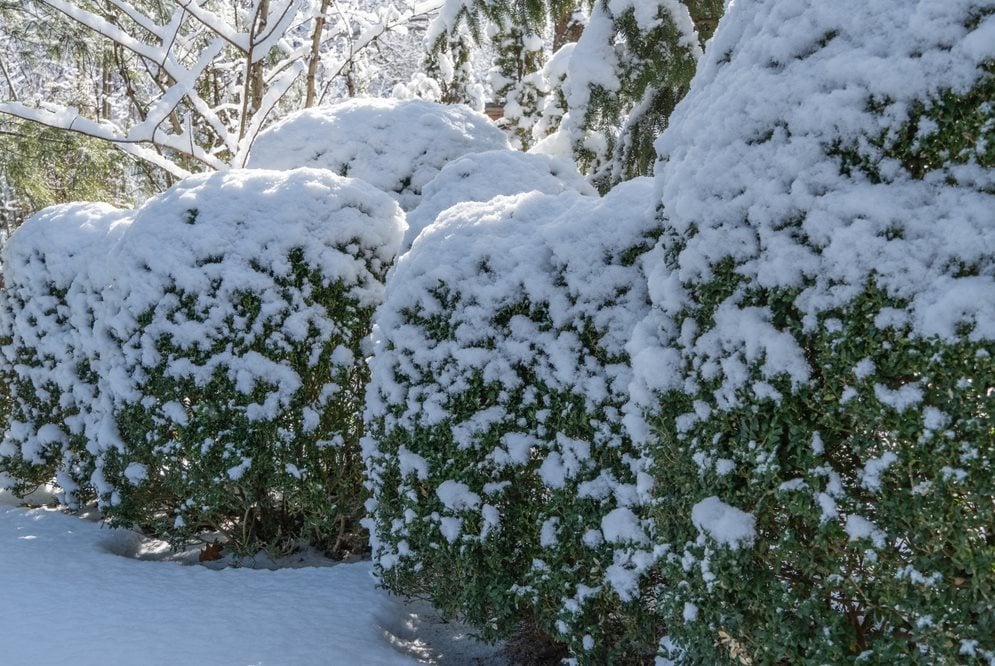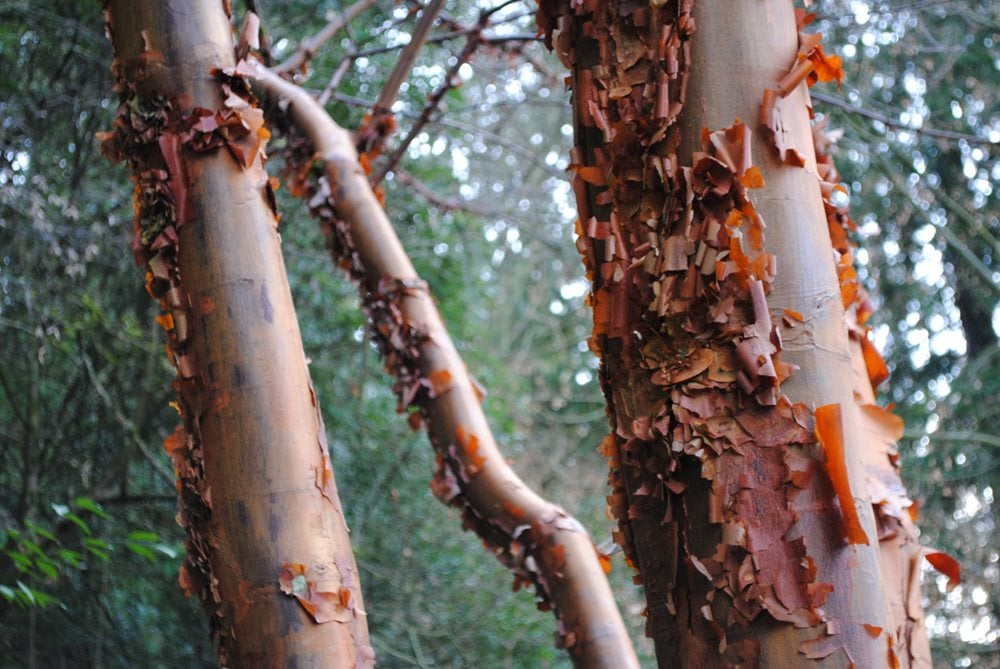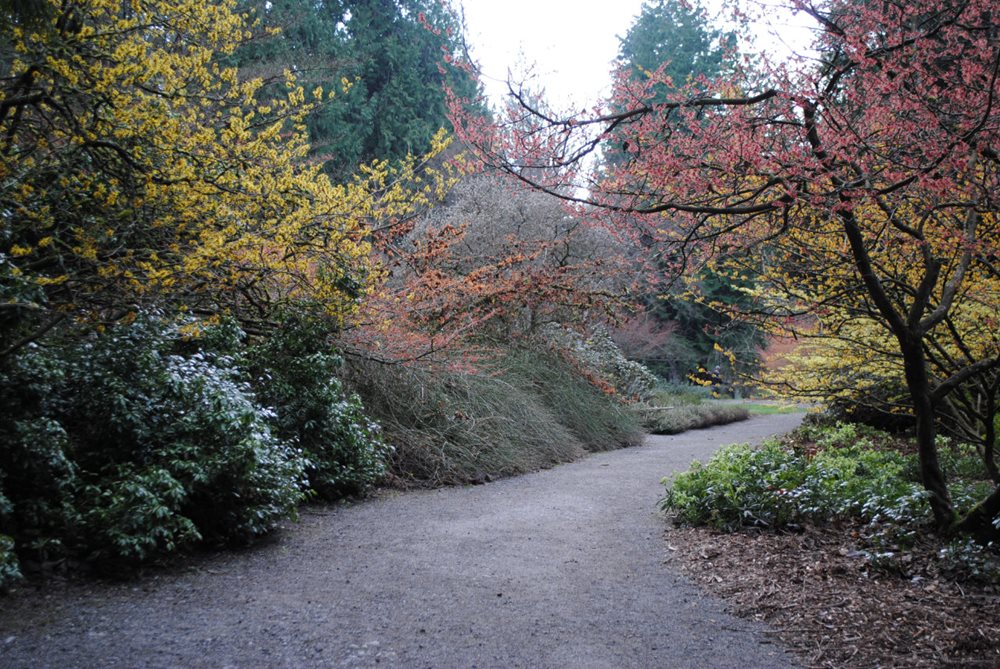How to Create Winter Interest in the Garden
Discover the beauty of late-winter's structural silhouettes, colorful stems, and moreBundle up and walk through your winter garden, and what do you see? Is it filled with quiet beauty from structural silhouettes, colorful stems, textural bark, late-blooming flowers, and the flutter of activity from hungry birds and cold-hardy pollinators? Or is it a winter wasteland—a barren, beige landscape devoid of color and visual interest, causing one to rush back inside to dream about spring’s garden.
The winter season is a golden opportunity to take a closer look at your garden. Especially late winter, when every last leaf has fallen from deciduous plants and the garden is stripped bare, with no distractions from colorful flowers and foliage.
So, before your garden begins to spring back into action, go outside and take a good hard look at it. If you’re not happy with what you see, below are some simple strategies that will transform your bleak winter garden into a seasonal visual feast.
PLANTS WITH STRUCTURE AND FORM
A bare winter garden is like an X-ray that points out problems resulting from a lack of structure and form. Both evergreen and deciduous plants can often be sources of structure and are often referred to as the ‘bones of the garden’. Without these ‘bones’ to hold things together, the garden falls flat in the colder months.

Surrounded by snow, evergreen and deciduous plants can still provide plenty of visual and structural interest. Photo by: Sergey Denisenko / Shutterstock.
Hardy evergreens and sub-shrubs.
Evergreens and sub-shrubs not only have the strength to stand up to heavy snowfall, but interesting forms are further accentuated when covered with a dusting of white, adding visual interest to the garden. Examples include evergreen Picea pungens ‘Montgomery', columnar boxwood (Buxus sempervirens 'Graham Blandy'), and the rounded Pittosporum tenuifolium ‘Golfball’ (Kohuhu); or evergreen sub-shrubs like heaths and heathers (Calluna and Erica varieties), myrtle spurge (Euphorbia myrsinites), or Russian sage (Perovskia.)

The evergreen blue spruce and gold breath of heaven add color and structure to this February garden. Photo by: Rebecca Sweet.
Deciduous plants.
In addition to evergreens, don’t forget the valuable framework provided by deciduous plants. During the winter months, the shapes of many dormant plants now take center stage, with some, in fact, actually looking their best. Just imagine the unique, twisting, or draping quality of a dormant Japanese maple that provides a quiet beauty to the winter garden. Other plants with unusual shapes when dormant include the weeping white mulberry (Morus alba ‘Pendula’) or upright, wavy branches of the European beech tree (Fagus sylvatica ‘Dawyck Purple’).

The twisting form of this dormant Japanese maple is just as beautiful in the winter as it is with summer foliage. Photo by: Rebecca Sweet.
NON-LIVING SOURCES OF STRUCTURE AND FORM
Non-living sources of structure provide garden interest year-round, but their structure is most appreciated during the quiet winter months when the garden is fast asleep. Whether formal in style (like a towering tuteur or obelisk) or informal (a rustic pyramid or trellis made of branches), these structures add much-needed height during the bare winter months.

Vegetable beds are notorious for looking bleak in the winter. Freeland and Sabrina Tanner have solved this problem by adding towering tuteurs. Tanner Garden. Photo by: Rebecca Sweet.
LATE WINTER DRIED FLOWERS AND SEED HEADS
Don’t be so quick to reach for the pruners to cut back spent flowers and seed heads. They’re not only valuable sources of protection and energy for pollinators and birds, but they’re also indispensable for late-season beauty. Flowers and seed heads with sturdier shapes can easily hold up through late winter, providing months of structure and beauty. Examples include the spent flowers from many hydrangeas (oakleaf and panicle varieties are sturdiest), the wispy inflorescence of ornamental grasses (such as Calamagrostis, Panicum, or Miscanthus), or the seed heads of perennials such as Jerusalem sage (Phlomis), coneflower (Echinacea), or Joe Pye weed (Eutrochium maculatum).

The late-winter seed heads of the rose of Sharon (Hibiscus syriacus) provide structure and nourishment for hungry birds. Photo by: Rebecca Sweet.
COLORFUL STEMS
Colder temperatures can transform the stems and branches of many deciduous shrubs into bursts of magnificent color, lighting up the winter landscape. The best examples can often be found on the previous year’s growth of the brilliant yellow stems of yellow twig dogwood (Cornus sanguinea ‘Flaviramea’) or the red stems of the scarlet willow (Salix alba subsp. vitellina ‘Britzensis').
For those who garden in warmer climates with limited winter chill, options include the Japanese maple ‘Sango-kaku’ or red twig dogwood (Cornus sericea).

Cold temperatures ignite the branches of Cornus snaguinea 'Midwinter Fire’, adding shades of yellow and orange to the gray winter landscape. Photo by: Rebecca Sweet.
TEXTURAL TREE BARK
Texture is vital in the winter landscape, taking center stage when little else provides visual interest. This is especially true in cold climates with heavy snowfall. Tree bark can be an excellent source of texture, providing drastic contrast (and visual relief) against the seemingly endless sea of snow. Examples include the paperbark maple (Acer griseum), red birch (Betula albosinensis ‘Red Panda’), or the Himalayan birch (Betula jackmanii).

Which is more magnificent: the mahogany-colored bark of the paperbark maple (Acer griseum) or its curling, peeling winter bark? Photo by: Rebecca Sweet.
WINTER BERRIES
For gardeners craving color during the cold and rainy months, winter berries are a visual feast for the eyes. But, more importantly, berries are a literal feast for hungry, migrating birds. Berries are valuable resources of energy, filled with sugar and fat, which help birds withstand freezing temperatures and sustain them throughout the winter. Examples include mountain hawthorn (Crataegus pinnatifida), wintergreen (Gaultheria procumbens), snowberry (Symphoricarpos ‘Proud Berry’ or ‘Charming Fantasy’), and toyon (Heteromeles arbutifolia).

A chilly grouse feasts on the fruit of the winter huckleberry (Vaccinium ovatum). Photo by: Rebecca Sweet.
LATE-WINTER SCENT
Many gardeners forget to include scent in the late winter garden, assuming it’s all but impossible to achieve. However, there are several sources of heavenly fragrance during the colder months, which add an unexpected (and delightful) layer to the winter garden. Examples include witch hazel (Hamamelis ‘Pallida’ is extra fragrant), sweet box (Sarcococca confusa), paper bush (Edgeworthia chrysantha), Daphne ('Perfume Princess’ is extra fragrant), wintersweet (Chimonanthus praecox), or winter-blooming honeysuckle (Lonicera fragrantissima and L. purpusii) to name just a few.

The small but mighty flowers of sweetbox (Sarcococca confusa) pack a heavenly punch with fragrant late-winter scent. Photo by: Rebecca Sweet.
LATE-WINTER FLOWERS
While waiting for the dormant garden to wake, don’t forget to include winter flowers that shine and add a little sparkle to the garden during the transitional time between late winter and early spring. These colorful bloomers delight both gardeners and pollinators—who are desperate for late winter sources of nectar. Examples include Cyclamen coum, Lenten rose (Helleborus spp.), manzanita (Arctostaphylos spp.), heath and heathers (Erica and Calluna), quince shrubs (Chaenomeles speciosa), silk tassle bush (Garrya x issaquahensis), and many late-winter blooming bulbs.

The red, yellow, and orange flowers of witch hazels are the main attraction of this winter garden, providing both color and scent. Washington Park Arboretum. Photo by: Rebecca Sweet.
ART IN THE GARDEN
It goes without saying that including art in the garden is a fantastic way to include structure and interest throughout the entire year. Art adds personality to the garden, and when used to enhance the surrounding plants (whether evergreen or dormant) can elevate the winter garden from mediocre to magnificent.

The vibrant red urn, made from garden tools by Freeland Tanner, shines brightest on a cold late-winter day. Tanner garden. Photo by: Rebecca Sweet.

BOOK REBECCA AS YOUR NEXT GARDEN SPEAKER!
Fun, passionate, and knowledgeable, three words that describe Rebecca Sweet! See what discussion topics are available and watch a short video as Rebecca explains how her talks will inspire, entertain, and educate gardeners at all skill levels.
RELATED:
More from Rebecca Sweet
Winter Flowers
Top 15 Evergreen Shrubs for Your Garden
Evergreen Trees
